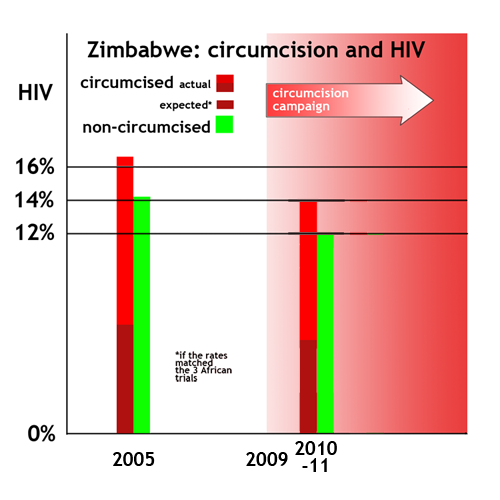|
Pediatrics
March 18, 2013
The following article is due to appear in the next issue of Pediatrics, the journal of the American Academy of Pediatrics.
It is signed by the heads or spokespeople for the paediatric associations of
Austria, Britain, Denmark, England, Estonia, Finland, Germany, Iceland, Latvia, Lithuania, Norway, Sweden, and the Netherlands, and by senior paediatricians in
Canada, the Czech Republic, France and Poland.
It comprehensively dismantles the AAP's 2012 circumcision policy statement.
Cultural Bias in AAP's 2012 Technical Report and Policy Statement on Male Circumcision
Abstract
The American Academy of Pediatrics (AAP) recently released its new technical report and policy statement on male circumcision, concluding that current evidence indicates that the health benefits of newborn male circumcision outweigh the risks. The technical report is based on the scrutiny of a large number of complex scientific articles. Therefore, while striving for objectivity, the conclusions drawn by the eight task force members reflect what these individual doctors perceived as trustworthy evidence. Seen from the outside, cultural bias reflecting the normality of non-therapeutic male circumcision in the US seems obvious, and the report’s conclusions are different from those reached by doctors in other parts of the Western world, including Europe, Canada, and Australia. In this commentary, a quite different view is presented by non-US-based doctors and representatives of general medical associations and societies for pediatrics, pediatric surgery and pediatric urology in Northern Europe. To these authors, there is but one of the arguments put forward by the AAP that has some theoretical relevance in relation to infant male circumcision, namely the possible protection against urinary tract infections in infant boys, which can be easily treated with antibiotics without tissue loss. The other claimed health benefits, including protection against HIV/AIDS, genital herpes, genital warts and penile cancer, are questionable, weak and likely to have little public health relevance in a Western context, and do not represent compelling reasons for surgery before boys are old enough to decide for themselves.
Authors and Affiliations (38 people)
- Morten Frisch, MD, PhD: Consultant, Statens Serum Institut, Copenhagen, and Adjunct Professor of Sexual Health Epidemiology, Faculty of Medicine, Aalborg University, Aalborg, Denmark
- Yves Aigrain, MD, PhD: Professor of Pediatric Surgery, Hôpital Necker Enfants Malades, Université Paris Descartes, Paris, France
- Vidmantas Barauskas, MD, PhD: Professor and President of the Lithuanian Society of Paediatric Surgeons, Lithuania
- Ragnar Bjarnason, MD, PhD: Professor of Pediatrics, Landspitali University Hospital, Reykjavik, Iceland
- Su-Anna Boddy, MD: Consultant in Pediatric Surgery and Chairman of the Children’s Surgical Forum of the Royal College of Surgeons of England, UK
- Piotr Czauderna, MD, PhD: Professor of Pediatric Surgery, Medical University of Gdansk, Gdansk, Poland
- Robert P. E. de Gier, MD: Consultant in Pediatric Urology and Chairman of Working Group for Pediatric Urology, Dutch Urological Association, The Netherlands
- Tom P. V. M. de Jong, MD, PhD: Professor of Pediatric Urology, University Children's Hospitals UMC Utrecht and AMC Amsterdam, The Netherlands
- Günter Fasching, MD: Professor and President of the Austrian Society of Pediatric and Adolescent Surgery, Austria
- Willem Fetter, MD, PhD: Professor and President of the Paediatric Association of the Netherlands, The Netherlands
- Manfred Gahr, MD: Professor and General Secretary of the German Academy of Paediatrics and Adolescent Medicine, Germany
- Christian Graugaard, MD, PhD: Professor of Sexology, Aalborg University, Faculty of Medicine, Denmark
- Gorm Greisen, MD, PhD: Professor of Pediatrics, Rigshospitalet, Copenhagen, Denmark
- Anna Gunnarsdottir, MD, PhD: Consultant in Pediatric Surgery, Landspitali University Hospital, Reykjavik, Iceland, and Karolinska University Hospital, Stockholm, Sweden
- Wolfram Hartmann, MD: President of the German Association of Pediatricians, Germany
- Petr Havranek, MD, PhD: Professor of Pediatric Surgery, Thomayer Hospital, Charles University, Prague, Czech Republic
- Rowena Hitchcock, MD: Professor and President of the British Association of Paediatric Urologists, UK
- Simon Huddart, MD: Professor and Honorary Secretary of the British Association of Paediatric Surgeons, UK
- Staffan Janson, MD, PhD: Professor and Chairman of Committee on Ethics and Children’s Rights, Swedish Paediatric Society, Sweden
- Poul Jaszczak, MD, PhD: Vice President and Chairman of the Ethics Committee of the Danish Medical Association, Denmark
- Christoph Kupferschmid, MD: Practicing Pediatrician and Member of Ethics Committee of the German Academy of Pediatrics, Germany
- Tuija Lahdes-Vasama MD: Consultant in Pediatric Surgery and President of The Finnish Association of Pediatric Surgeons, Finland
- Harry Lindahl, MD, PhD: Associate Professor of Pediatric Surgery, Helsinki University Children's Hospital, Helsinki, Finland
- Noni MacDonald, MD: Professor of Pediatrics, IWK Health Centre, Dalhousie University, Halifax, Canada
- Trond Markestad, MD: Professor of Pediatrics, Chairman of the Ethics Committee of the Norwegian Medical Association, Oslo, Norway
- Matis Märtson, MD, PhD: Consultant in Pediatric Surgery and President of the Estonian Society of Paediatric Surgeons, Tallinn, Estonia
- Solveig Marianne Nordhov, MD, PhD: Consultant in Pediatrics and President of The Norwegian Paediatric Association, Norway
- Heikki Pälve, MD, PhD: Chief Executive Officer of the Finnish Medical Association, Finland
- Aigars Petersons, MD, PhD: Professor and President of the Latvian Association of Pediatric Surgeons, Latvia
- Feargal Quinn, MD: Consultant in Pediatric Surgery, Our Lady's Children's Hospital, Dublin, Ireland
- Niels Qvist, MD, PhD: Professor of Pediatric Surgery, Odense University Hospital, Odense, Denmark
- Thrainn Rosmundsson, MD: Chief of Pediatric Surgery, Landspitali University Hospital, Reykjavik, Iceland
- Harri Saxen, MD, PhD: Associate Professor of Pediatrics, Helsinki University Children’s Hospital, Helsinki, Finland
- Olle Söder, MD, PhD: Professor and President of the Swedish Pediatric Society, Stockholm, Sweden
- Maximilian Stehr, MD, PhD: Professor of Pediatric Surgery, Dr. v. Haunersches Kinderspital, Ludwig-Maximilians Universität, Munich, Germany
- Volker C.H. von Loewenich, MD: Professor and Chairman of the Commission for Ethical Questions, German Academy of Pediatrics, Frankfurt, Germany
- Johan Wallander, MD, PhD: Professor and Chairman of the Swedish Society of Pediatric Surgery, Sweden
- Rene Wijnen, MD, PhD: Professor and Chairman of the Dutch Society of Pediatric Surgery, The Netherlands
|
Earlier story
|
